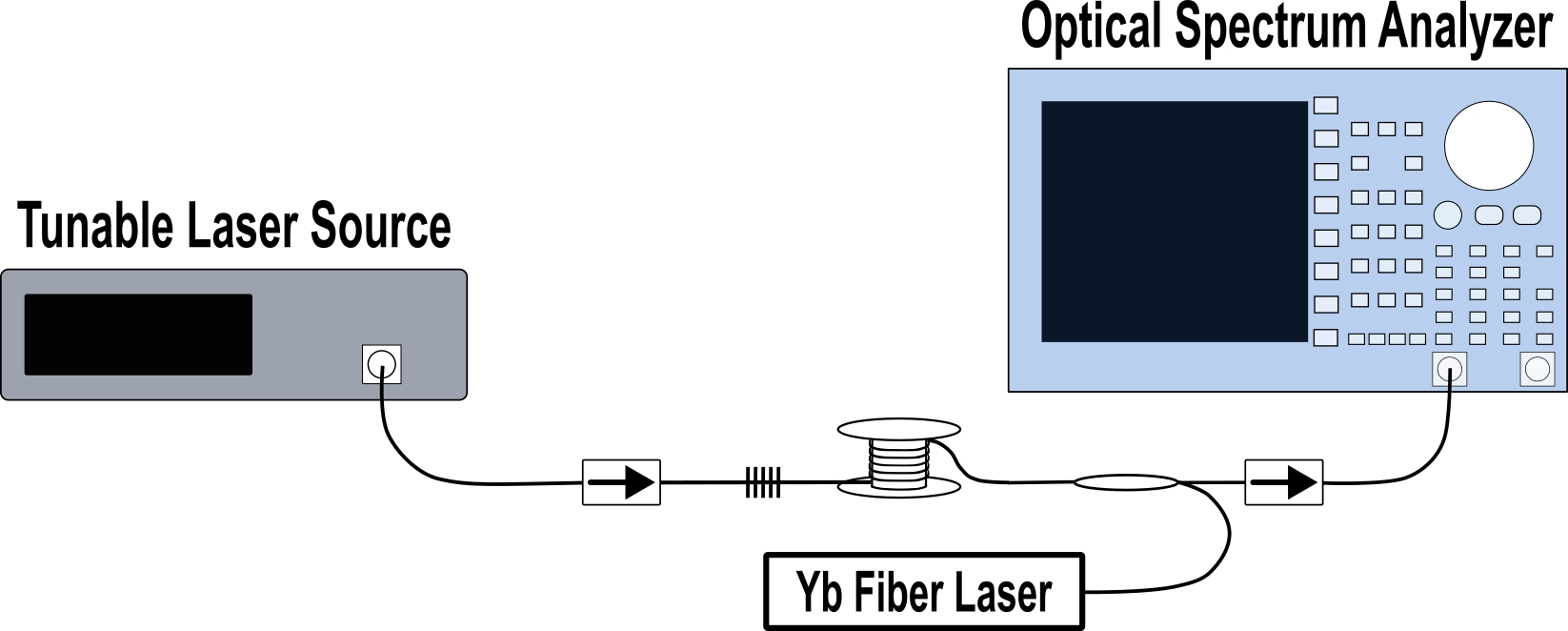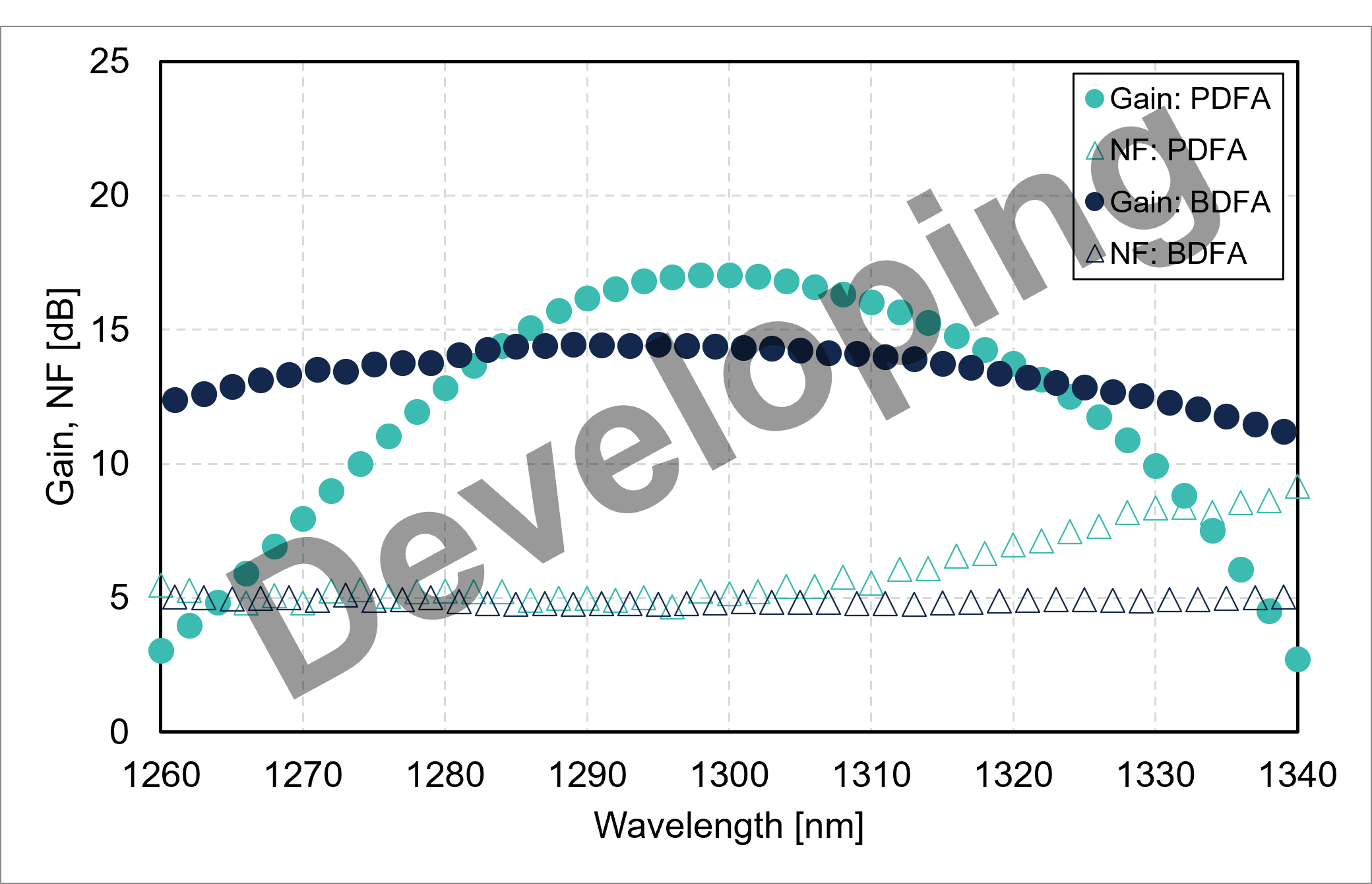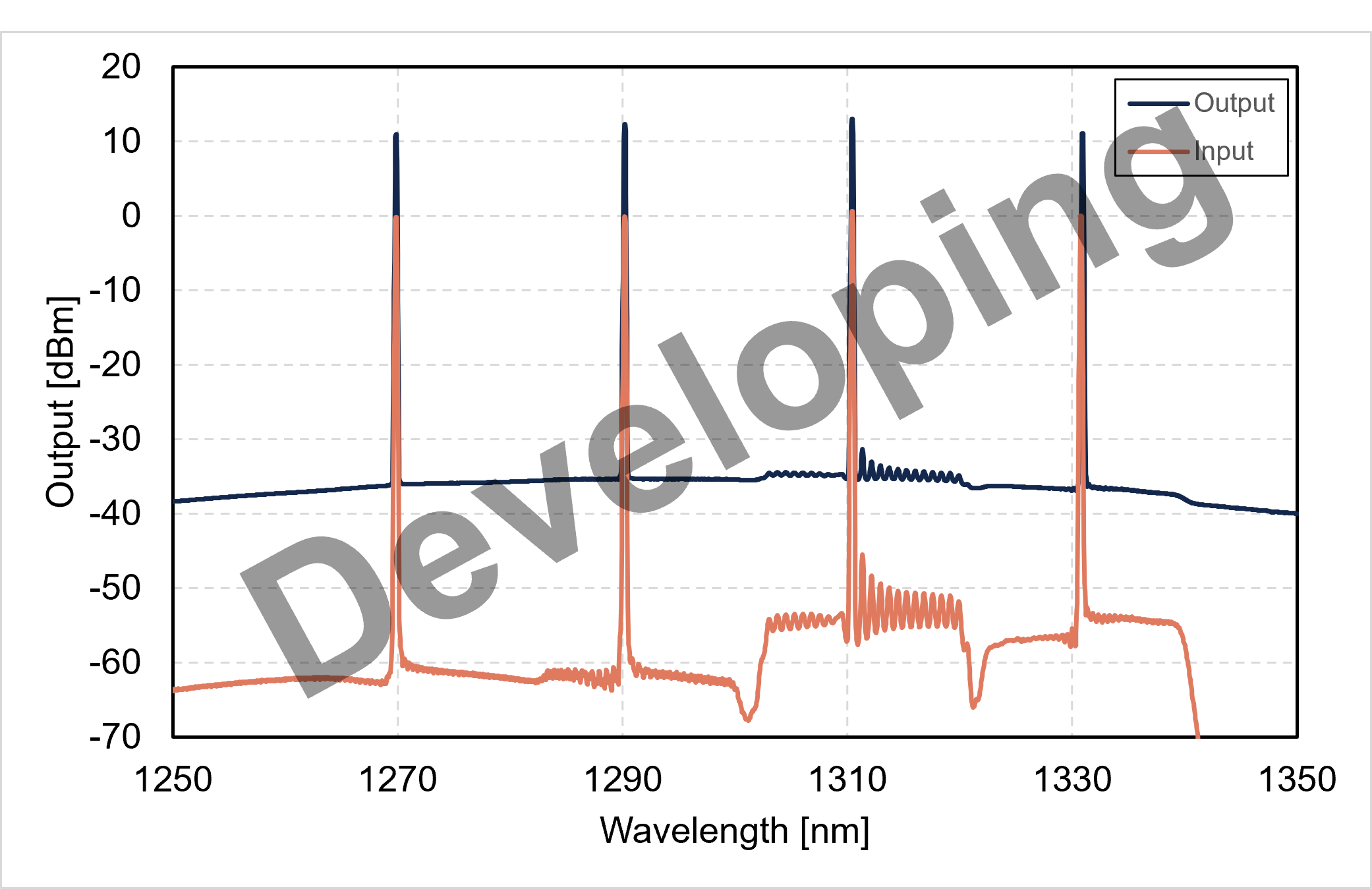JAPANESE / ENGLISH

JAPANESE / ENGLISH
Last updated on 03/3/2024
Recently, O-band amplifiers have attracted a lot of interest due to the rapid growth of network traffic demand. Among O-band amplifiers, a Bismuth-Doped Fiber Amplifier (BDFA) is one of the most attractive configurations because of its wide working wavelength range. Fiberlabs Inc., a leading manufacturer of O-band fiber amplifiers offering the most reliable and highest output power Praseodymium-Doped Fiber Amplifier (PDFA) ( Blog > O-band PDFA achieves 500-mW output), has begun development of the O-band BDFA.
Figure 1 shows the experimental setup of our BDFA. One-mW input signal from a tunable laser source was amplified by a 190-meter-length Bismuth-Doped Fiber (BDF), that was backward pumped by a 1150-nm Yb fiber laser. In order to put the whole system into a 2U rack mount case, the BDF was spooled to a 100-mm-diameter jig. The residual pump light was reflected by a 99% Fiber Bragg Grating (FBG) to improve the gain and Noise Figure (NF). Both input and output isolators were implemented to suppress parasitic lasing.

Figure 1: Experimental setup of BDFA.
The amplification characteristics of the BDFA at 2-W pumping power are shown in Fig.2. The flat gain over the 1260-1340nm wavelength region is characteristic of a BDFA pumped at 1150 nm , and would be beneficial for amplifying the four-channel CWDM wavelengths (CWDM4, 1271/1291/1311/1331nm) that are used for 400GBASE-LR4.

Figure 2: Gain/noise figure vs wavelength.
In order to characterize its CWDM4 amplification performance, we simultaneously launched four signals (0dBm/ch) into the amplifier. The launched and amplified spectra are shown in Fig.3, demonstrating that the CWDM4 signals were simultaneously amplified with more than 10dB gain and less than 3dB gain deviation. These advantages of the 1150-nm-pumped BDFA would not be limited for the CWDM4 amplification, and it has great potential to fill the wavelength gap that cannot be reached by rare-earth-doped fibers.

Figure 3: Amplification characteristics for CWDM4 signal.
As BDFA is relatively new technology and is not based on rare-earth elements, further characterization and optimization work is also needed to better understand the differences of BDFA and rare-earth-doped fiber amplifiers. We continue our effort toward new product release, and it will also help us ensure reliability and repeatability of our manufacturing.